 |
 |
 |
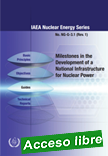 |
Milestones in the Development of a National Infrastructure for Nuclear Power
IAEA Nuclear Energy Series NG-G-3.1 (Rev. 1)
The development and implementation of an appropriate infrastructure to support the successful introduction of nuclear power and its safe, secure, peaceful and sustainable application is an issue of central concern, especially for countries that are considering and planning their first nuclear power plant. In preparing the necessary nuclear infrastructure, there are several activities that need to be completed.
|
These activities can be split into three progressive phases of development. This publication provides a description of the conditions expected to be achieved by the end of each phase to assist with the best use of resources. ‘Milestones’ refer to the conditions necessary to demonstrate that the phase has been successfully completed.
|
 |
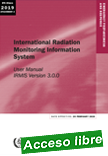 |
International Radiation Monitoring Information System
User Manual IRMIS Version 3.0.0
The Convention on Early Notification of a Nuclear Accident and the Convention on Assistance in the Case of a Nuclear Accident or Radiological Emergency are the prime legal instruments that establish an international framework to facilitate the exchange of information and the prompt provision of assistance in the event of a nuclear or radiological incident or emergency, with the aim of minimizing the potential consequences.
|
The IAEA has specific functions assigned to it under these conventions. The arrangements between the IAEA, States and international organizations for facilitating the practical implementation of those articles of the two conventions that are operational in nature are documented in the Operations Manual for Incident and Emergency Communication, EPR–IEComm (2019). This publication is an attachment to EPR–IEComm (2019). It provides general operational instructions for the International Radiation Monitoring Information System (IRMIS) and information on its concept, description and scope. IRMIS is a client–server based web application that provides Member States a tool to share and visualize large quantities of radiation monitoring data during routine and emergency situations..
|
 |
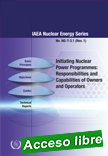 |
Initiating Nuclear Power Programmes: Responsibilities and Capabilities of Owners and Operators
IAEA Nuclear Energy Series NG-T-3.1 (Rev. 1)
The development of the infrastructure for a nuclear power programme includes the establishment of policies and strategies in areas such as human resource development, nuclear fuel cycle and waste management, industrial involvement and nuclear safety. It also requires the establishment of a legal and regulatory framework that creates an environment enabling the project to be implemented in a transparent and effective manner.
|
These elements of this infrastructure will have an impact on the project and will guide the discussions of the future owner/operator with potential vendors. In this regard, it is important that the owner/operator, if already identified, participates in this process from the beginning. This publication provides guidance on the establishment and development of the owner/operator so that it can discharge its responsibilities throughout the phases of the programme. It also discusses the management of the interfaces between the owner/operator and other stakeholders.
|
 |
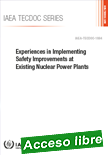 |
Experiences in Implementing Safety Improvements at Existing Nuclear Power
Plants IAEA TECDOC No. 1894
The development of the infrastructure for a nuclear power programme includes the establishment of policies and strategies in areas such as human resource development, nuclear fuel cycle and waste management, industrial involvement and nuclear safety. It also requires the establishment of a legal and regulatory framework that creates an environment enabling the project to be implemented in a transparent and effective manner.
|
These elements of this infrastructure will have an impact on the project and will guide the discussions of the future owner/operator with potential vendors. In this regard, it is important that the owner/operator, if already identified, participates in this process from the beginning. This publication provides guidance on the establishment and development of the owner/operator so that it can discharge its responsibilities throughout the phases of the programme. It also discusses the management of the interfaces between the owner/operator and other stakeholders.
|
 |
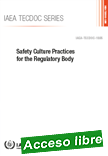 |
Safety Culture Practices for the Regulatory Body
IAEA TECDOC No. 1895 86 pages Published: 2020 English
This publication is the outcome of an IAEA meeting that provided a forum for senior regulators to share their experience and disseminate knowledge on how safety performance can be improved through effective leadership, management for safety and safety culture. The publication provides practical guidance to regulatory bodies on promoting and assessing safety culture within their own organizations and providing regulatory oversight of licensees' safety culture activities.
|
Practices from Member States are summarized and common challenges faced by regulatory bodies in implementing these practices are described.
|
 |
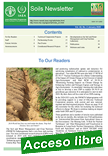 |
Soils Newsletter
Vol.42 No.2, January 2020
This newsletter highlights the IAEA's progress and key activities related to ongoing efforts to support Member States in the development and application of nuclear and related techniques to improve soil safety and control systems.
|
|
 |
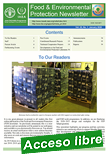 |
Food and Environmental Protection Newsletter
Vol. 23, No. 1, January 2020
This newsletter highlights the IAEA's progress and key activities related to ongoing efforts to support Member States in the development and application of nuclear and related techniques to improve food safety and control systems.
|
|
 |
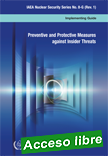 |
Preventive and Protective Measures against Insider Threats
IAEA Nuclear Security Series No. 8-G (Rev. 1)
This publication is a revision of IAEA Nuclear Security Series No. 8, Preventive and Protective Measures against Insider Threats, published in 2008. The new publication provides updated guidance to States, their competent authorities and operators, shippers and carriers on selecting, implementing, and evaluating measures for addressing insider threats. It applies to any type of nuclear facility,
|
, notably nuclear power plants, research reactors, and other nuclear fuel-cycle facilities (e.g. enrichment plants, reprocessing plants, fuel fabrication plants and storage facilities), whether in design, redesign, construction, commissioning, operation, shutdown or decommissioning.
|
 |
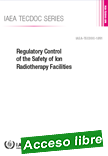 |
Regulatory Control of the Safety of Ion Radiotherapy Facilities
IAEA TECDOC No. 1891 Published:2020 124 pages
As the ion therapy treatment modality develops, knowledge of ion radiotherapy is growing and is being exchanged within the radiotherapy community. This community includes regulatory bodies, radiotherapy professionals, standards organizations, equipment manufacturers and suppliers. The exchange has contributed to the establishment of good practices to ensure the safety of ion therapy treatment facilities worldwide. The best international practices related to the regulatory control of radiotherapy facilities using ion accelerators have been summarized in this publication.
|
It also provides guidance on facility authorization and inspection, as well as technical safety aspects that are typical and significant for ion accelerators. Although addressed mainly to regulatory bodies for radiation safety control, the publication can also be used by equipment vendors and organizations operating or planning to construct such facilities.
|
 |
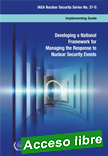 |
Developing a National Framework for Managing the Response to Nuclear Security Events
IAEA Nuclear Security Series No. 37-G
This publication provides guidance to States on the development, implementation, maintenance and sustainment of a national framework for managing the response to nuclear security events. Such a framework involves a structure and a set of principles and agreements around which a State can frame its nuclear security response functions, addressing the interfaces which need to exist between responding agencies to ensure effective, coordinated response.
|
By using this Implementing Guide, a State will ensure that it has considered all relevant key issues as it develops its national framework for responding to nuclear security events.
|
 |
| |
|
|

|
|
|
| |
|
|
| |
| |
|
|
| |
| |
|
|
| |
| |
|
|
|
| |
| |
